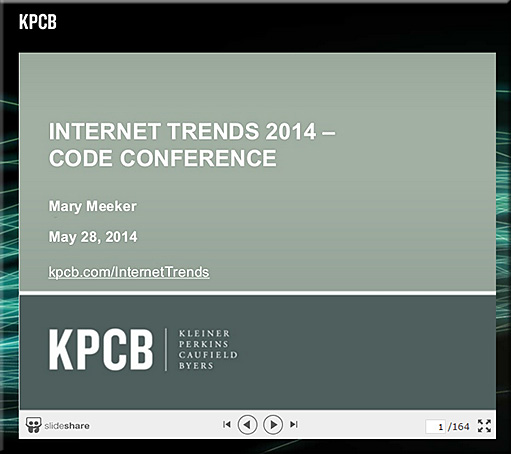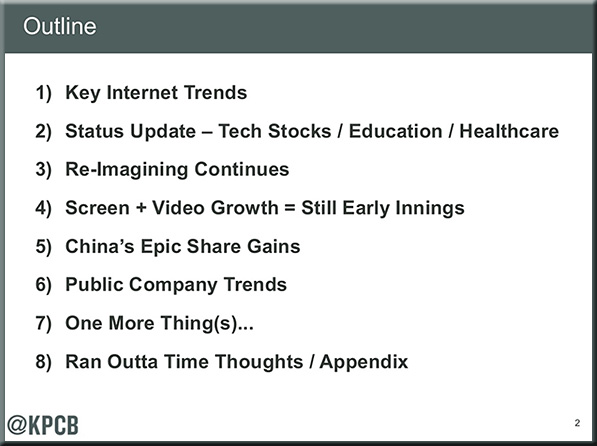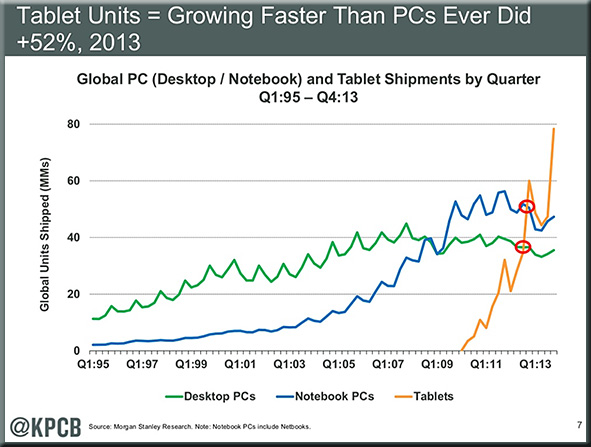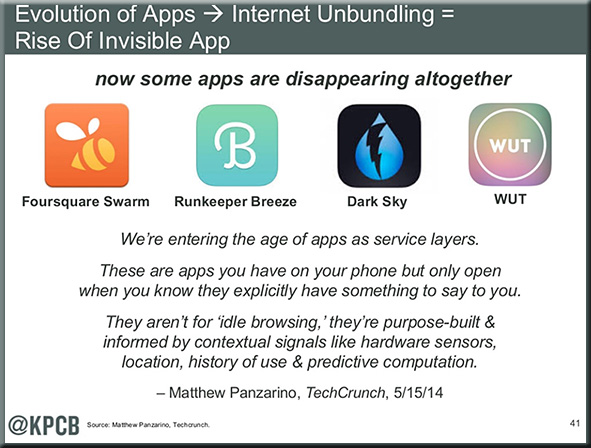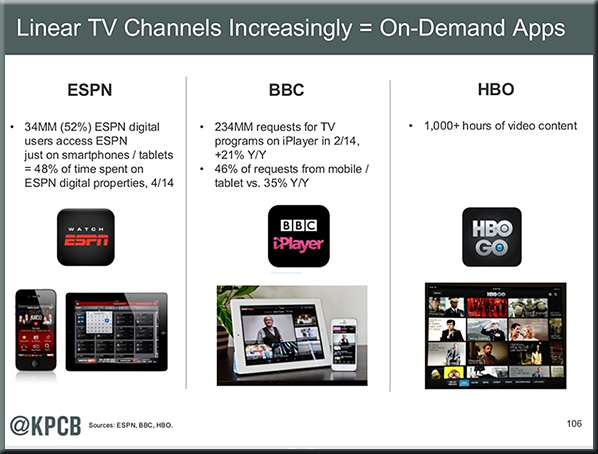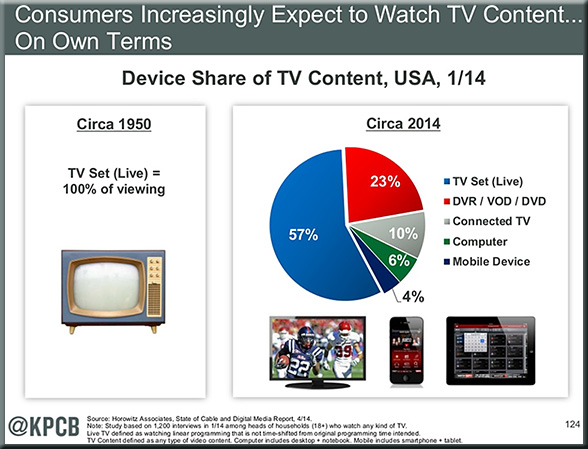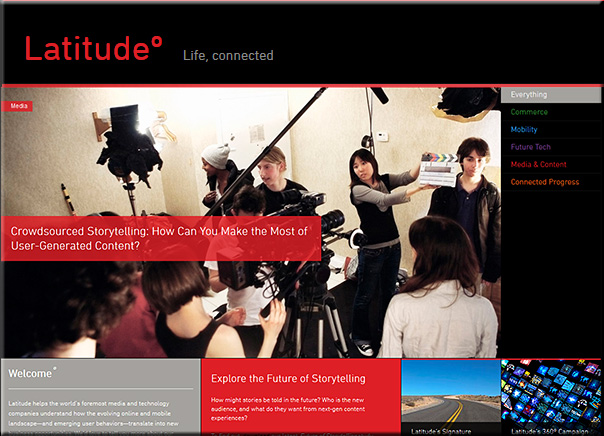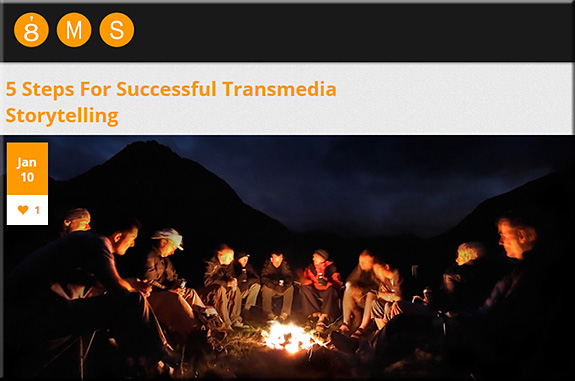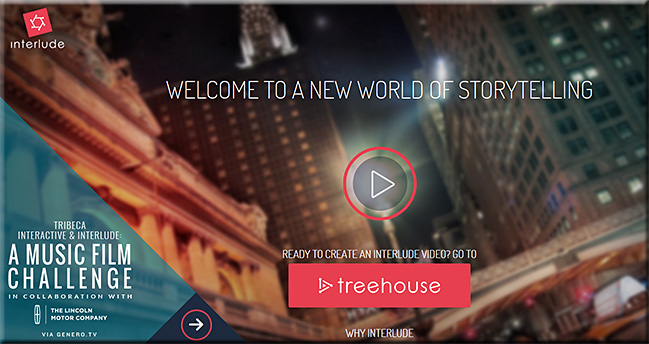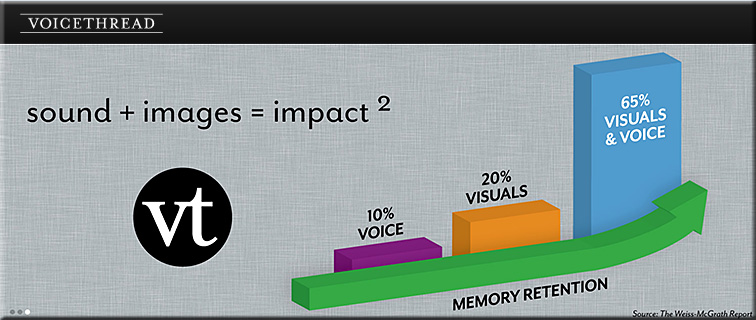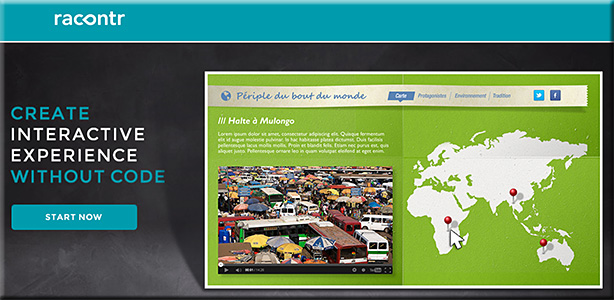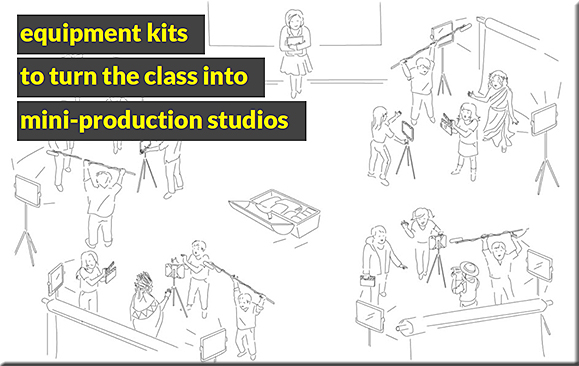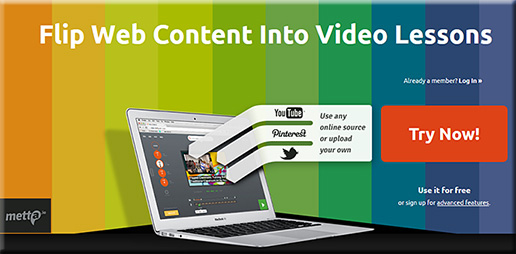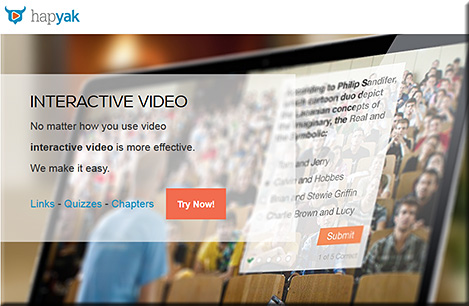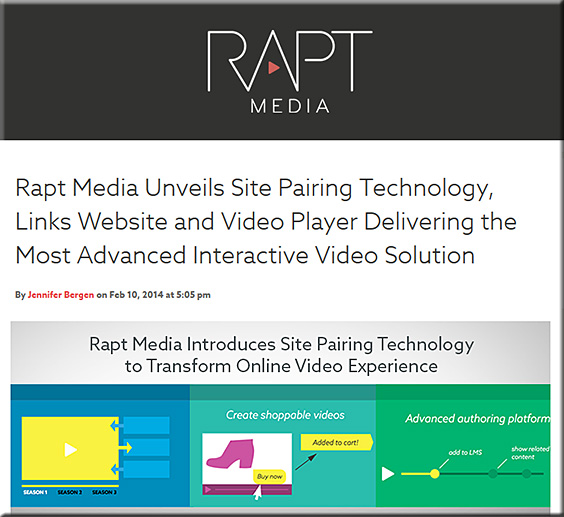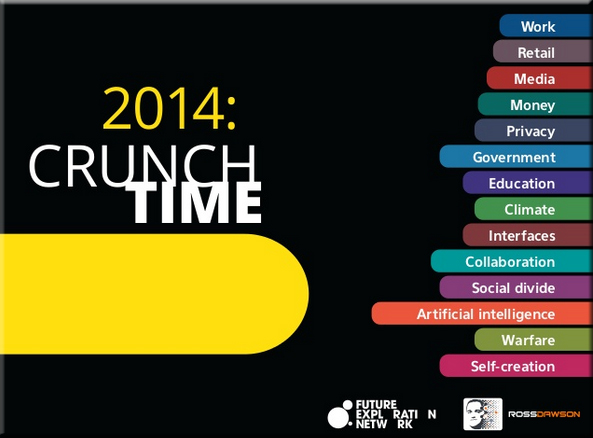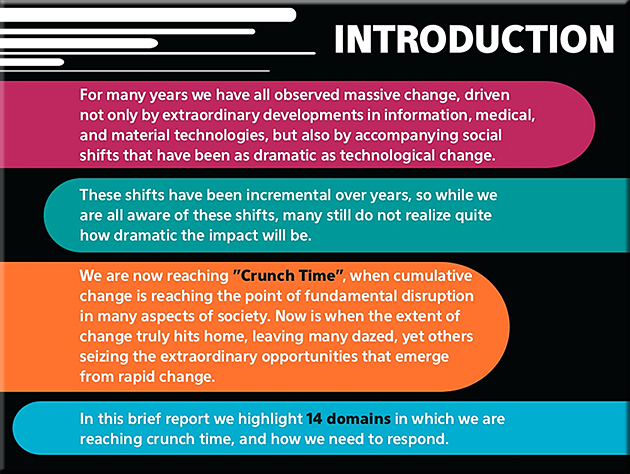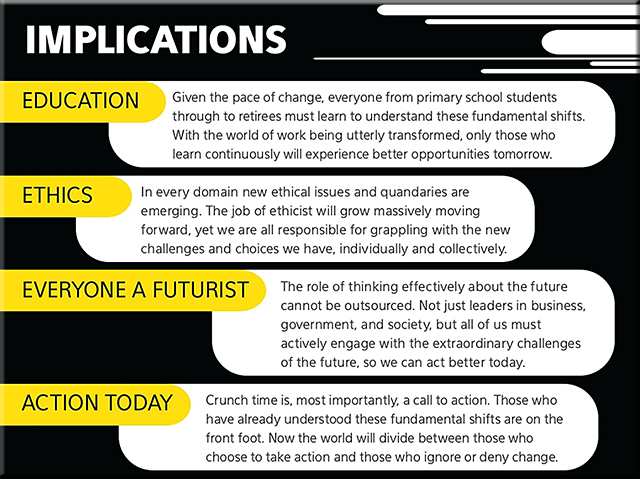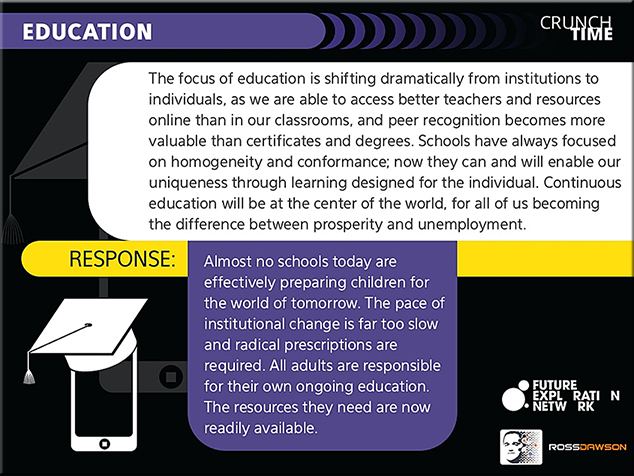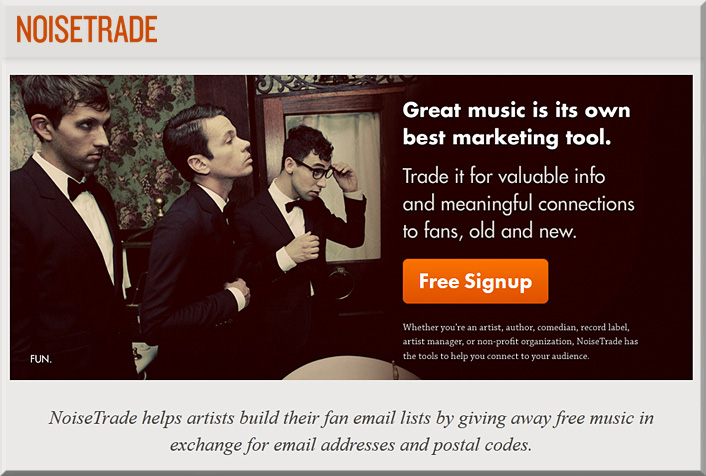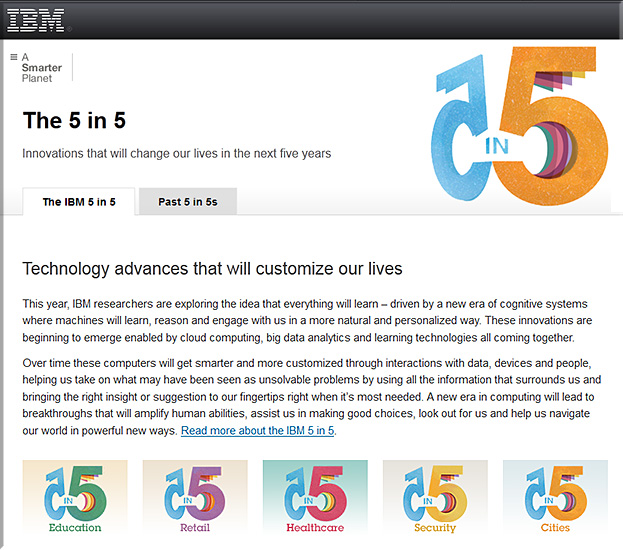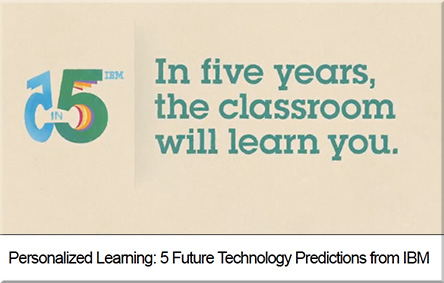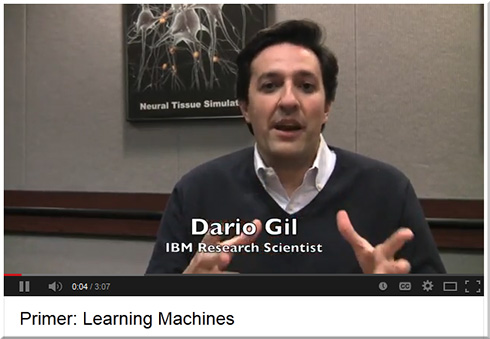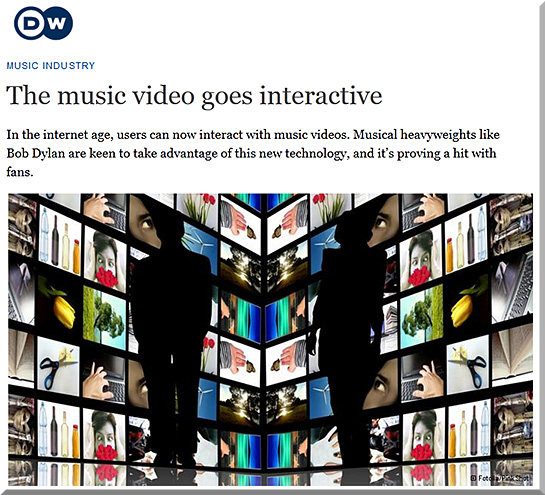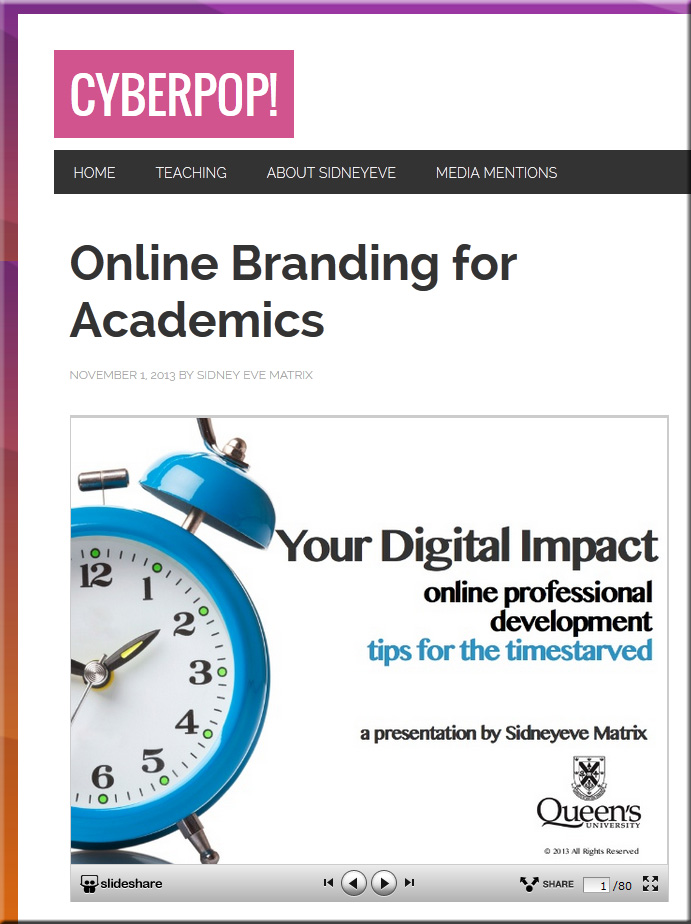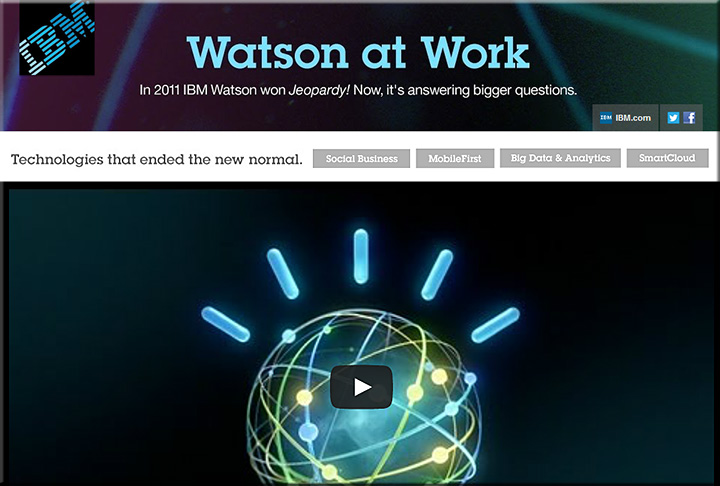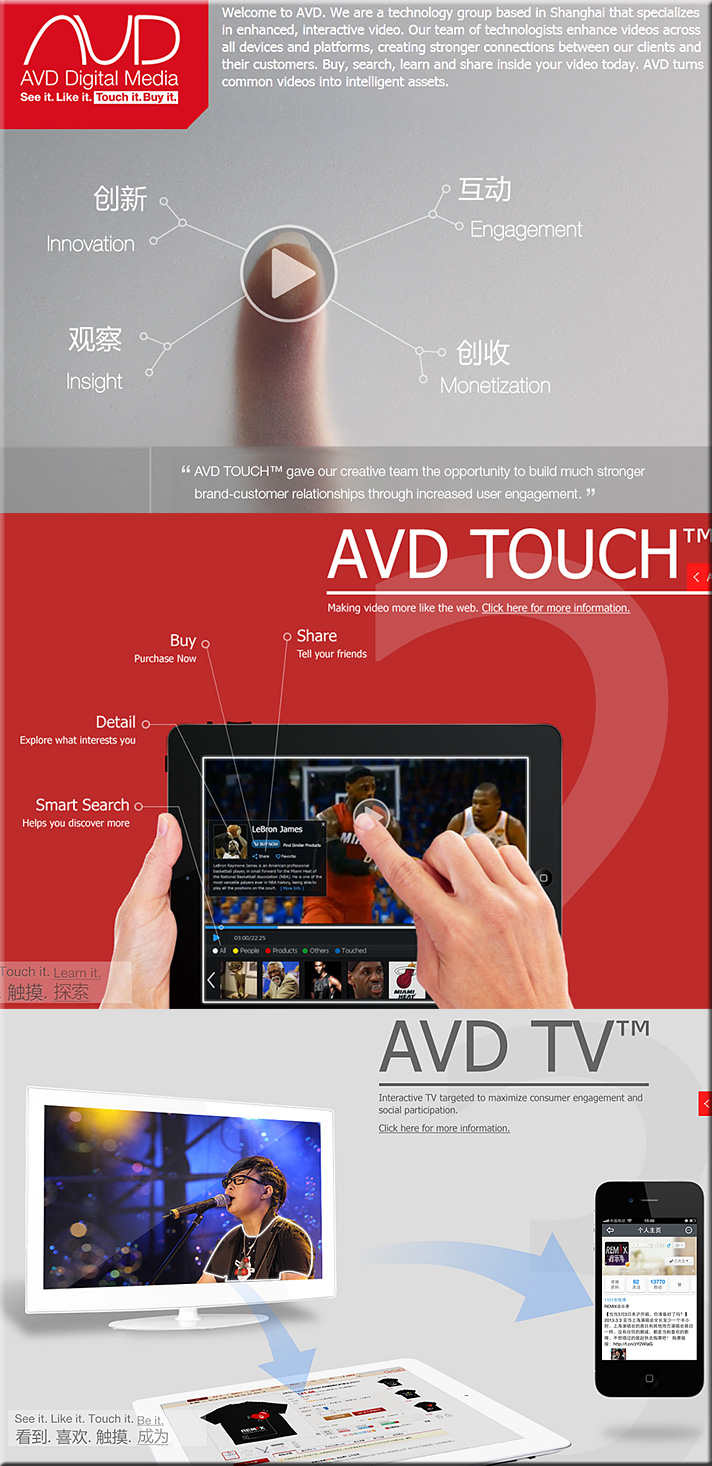The Future of iBeacon: Trends for the Year Ahead — from beekn.net guest post by Stefan Wolpers
Excerpt:
Beacons will become a hardware commodity within the next 6 to 12 months:
Best of Beacons – Weekly Wrap Up for May 9 — from storify.com/jason_smith by Jason Smith, OHO Interactive
Great to see some new launches and some very interesting patent news from Apple. The Cisco Report on In Store experiences came out earlier but the data is very good.
A TV app from Disney lets travelers browse its vacation offerings — from nytimes.com by Jane Levere
Excerpts (emphasis DSC):
A SMART TV app being introduced by Walt Disney Parks and Resorts on Thursday will let potential travelers use their remote controls to research vacations at theme parks and hotels and on cruise ships and packaged tours.
Brad Baker, director of digital marketing for Walt Disney Parks and Resorts, said the advent of smart, or Internet-connected, TVs had created “a really interesting space for us, since there is now a new way for us to be able to tell our story.”
Some mentioned functionality:
- Aggregates videos, photographs, interactive theme park maps and other information from the websites of Walt Disney Parks and Resorts businesses and from their social media channels.
- Has a trivia quiz
- Some videos
- Lets viewers request additional information by submitting their email address
From DSC:
The items below speak to the wonderful, powerful world of storytelling. I see storytelling becoming more interactive/participatory — offering more choice and more control to the viewers. There are applications in education, training, marketing, advertising, and more. Finally, I’ve also included some interesting tools/sites for folks to create their own digitally-based stories.
How storytelling can do wonders in blogging — by Kumail Hemani
Excerpt (emphasis DSC):
Why then was my history class one of the best classes I had? We never had to learn by heart any of the history notes in spite of all the dates, events, places and names. What we heard in that class got imprinted in our mind word by word as soon as they reached my ears.
Reason?
It was in the art of my teacher’s style of speaking and style of lectures. She never took our lessons as lectures, instead she choose to tell them through stories.
My teacher knew the art of true speaking. She spoke in such a style that we students felt everything happening around us. The lectures used to start forming an image in students mind, creating a flow, making everything seem like it is happening in the present. In such style of lectures, it only took us moments before everything made an impact on us and we understood everything word by word.
5 apps for making movies on mobile devices — from edutopia.org by Monica Burns
Excerpt:
Every year at Hollywood award shows, we see fantastic movies celebrated for their rich storytelling and dynamic performances. Your students can become moviemakers, too, thanks to some powerful apps for mobile devices. With these tools, your children can take videos and edit their work to make professional quality movies using iOS devices (iPads and iPhones) and Android tablets.
One good thing about this easy-to-use technology is that students can still use important English language arts skills like writing a narrative, planning a sequential story, and including key details when getting ready to make a movie. These apps can enhance the work that you are doing with children in the classroom and give them room to be creative storytellers.
Visual storytelling: Why data visualization is a content marketing fairytale — from searchenginejournal.com by Shane Jones
Excerpt (emphasis DSC):
Humans are scientifically designed to love stories.
More of our brain is engaged when we listen to stories. They cause our neurons to act as if we were actually doing the actions we hear in the story. Stories also have that human element we were talking about earlier, which makes them more entertaining and engaging.
If you do it right, you can use your data to tell the human story – and how it can be improved through the use of your product or service. In fact, the best content visuals do just that. They introduce viewers to a concept or situation (the problem you address), walk them through the main information about that concept or situation (how you’ll address it), and then provide a conclusion in the form of CTA (converting).
In summary, people are interested in learning about themselves, but they’re sick of learning through plain copy, and they’re programmed to desire visual content that tells a tale. Visualizing data is an effective strategy for giving them exactly what they want – information that is more visible and less difficult to digest.
Crowdsourced storytelling: How can you make the most of user-generated content? — from latd.com by Kim Gaskins
Excerpt:
Connect with people on an emotional level.
This may sound obvious, but there are countless ways to frame a particular project or issue to people you’re hoping to entice—so make sure to think like a good marketer. For example, Israel Mirsky is the founder of Uncoverage, a crowd-funding platform for investigative journalism, who has decided to focus his message on the issues that are most emotionally accessible to his audience. There’s a compelling business case backing Mirsky’s efforts; namely, there’s no longer any business model to support important but resource-intensive journalism that may bring in fewer advertising dollars than simple, click-worthy headlines. It’s a powerful argument, but it’s not the one Mirsky is taking to potential contributors: “I suspect that talking about the problem with investigative journalism isn’t the right value proposition to bring to the table here. The right one is the one that individuals care about: the people and the issues that matter to them.”
6 great examples of digital storytelling — from 8ms.com by Simon Heyes
Excerpt:
In the socially connected world, the attention span of an audience becomes shorter as more and more mundane content is thrust in front of their eyes. Digital storytelling allows a brand to evoke emotion, and become more connected with consumers.
If content is at the heart of digital marketing, then we believe audiences are at the heart of digital storytelling. By creating a story that is authentic to your brand and to your audience, and then building content around that story, you will connect your brand to the lives of your consumers.
Here are six handpicked examples where we believe great writing is combined with great imagery to create authentic content, and a brilliant digital story.
5 steps for successful transmedia storytelling — from 8ms.com by Simon Heyes
From DSC:
I see storytelling becoming more interactive/participatory — offering more choice and more control to the viewers. As such, here are some interesting tools/sites:
Also see:
5 reasons why you should be using storytelling in training — from dashe.com by Ben Nesvig
Excerpt:
Storytelling has been a popular tool for learning since the dawn of civilization, but thanks to technology bringing new mediums for storytelling, it has been on the rise in training in the workplace. Despite the fact that storytelling is a powerful vehicle for teaching, some still prefer to do a “data dump” because it’s easier than constructing a narrative, though not more effective. Below I provide 5 reasons why storytelling should be used more frequently in the workplace.
Digital storytelling: an efficient and engaging learning activity — from elearningindustry.com
Storehouse
“The easiest way to create, share, and discover beautiful stories.”
Excerpt (emphasis DSC):
Today, we’re thrilled to announce that our patent-pending Site Pairing technology is officially out of beta and into the hands of creatives, marketers, brands, and agencies. Our new Site Pairing technology, which creates a link between your video and your website, allows your creative or content team to quickly and easily build a scalable Interactive Video (IV) framework that enables communication between your videos and your website.
“Online Videos have traditionally been dead ends to brands and marketers,” said Erika Trautman, CEO and co-founder of Rapt Media. “Viewers can’t navigate from them, and often leave a site altogether if the content isn’t exactly what they’re looking for.”
…
Taking a step back, we see that the website and its embedded media are having a true conversation. “There is nothing that you’ve come to expect on a website, that we can’t duplicate in a video,” said Trautman. “And now the two are talking.”
From DSC:
Consider Noisetrade.com (a resource graciously relayed to me by Mr. Michael Haan at Calvin College)
Using this site/service, people can download music for free and donate to the artists if they want to (and I think they should). The WIN for the artist is more visibility and the ability to create/expand a fan base.
This site/service is another example of people representing themselves…of selling what they have to offer…of people representing their own brands.
Add to this the continuing trend towards more freelancing, and I can’t help but wonder…
- How should these sorts of things impact what we teach?
- How can we model this for our students? (i.e. reinventing oneself, selling oneself, communicating with others, staying relevant, and more)
Also see:
- The death of the office: What happens when the workspace is mobile, on-demand and all about networking — from forbes.com by Jeanne Meister
Excerpt:
As work becomes more flexible and communication more mobile, the office is turning into an increasingly complex and even abstract concept. As we look to the future, we have to ask: Will the workplace be on-site at our employer’s property, or on-demand at a collaborative space? Or will work simply be a mindset independent of place or time of day?
The answer is all three, and more.
See also:
- IBM’s 5 in 5: In the future, computers will learn — from asmarterplanet.com by Steve Hamm
- Personalized learning: In 5 years the classroom will learn you
- Primer: Learning Machines — from IBM by Dario Gil
Also see:
- ‘Classrooms of the future’ and DNA-tailored health care: IBM’s 5-in-5 tech predictions — from ctvnews.ca
Addendum on 12/18/13:
IBM reveals its top five innovation predictions for the next five years — from venturebeat.com by Dean Takahashi
Excerpt:
Globally, two out of three adults haven’t gotten the equivalent of a high school education. But IBM believes the classrooms of the future will give educators the tools to learn about every student, providing them with a tailored curriculum from kindergarten to high school.
“Your teacher spends time getting to know you every year,” Meyerson said. “What if they already knew everything about how you learn?”
In the next five years, IBM believes teachers will use “longitudinal data” such as test scores, attendance, and student behavior on electronic learning platforms — and not just the results of aptitude tests. Sophisticated analytics delivered over the cloud will help teachers make decisions about which students are at risk, their roadblocks, and the way to help them. IBM is working on a research project with the Gwinnett County Public Schools in Georgia, the 14th largest school district in the U.S. with 170,000 students. The goal is to increase the district’s graduation rate. And after a $10 billion investment in analytics, IBM believes it can harness big data to help students out.
“You’ll be able to pick up problems like dyslexia instantly,” Meyerson said. “If a child has extraordinary abilities, they can be recognized. With 30 kids in a class, a teacher cannot do it themselves. This doesn’t replace them. It allows them to be far more effective. Right now, the experience in a big box store doesn’t resemble this, but it will get there.”
Pharrell Williams debuts 24-hour, interactive music video for ‘Happy’ — from theverge.com by Amar Toor; with thanks to Mr. Colton Credelle for this item
Excerpt:
On Thursday, at the stroke of midnight, pop impresario Pharrell Williams debuted the video for his new single, “Happy.” It’s 24 hours long.
The video, available for streaming on 24hoursofhappy.com, features various dancers lip-synching to Williams’ single throughout the course of a day in Los Angeles. The four-minute, upbeat song is played on loop, with each cycle introducing a new dancer (or dancers) at a different location. Viewers can fast-forward or move backward using a clock interface that hovers over the display, and share specific moments on Twitter or Facebook. The dancers, meanwhile, include both anonymous extras and celebrities like Magic Johnson, Steve Carrell, and of course, Williams himself.
Also see:
From DSC:
How might this relate to educationally-related videos?
And for those of you in marketing and retail out there, could be some sharp/beneficial applications for you all here.
Online Branding for Academics
— from cyberpopblog.com by Sidneyeve Matrix; Keynote for EdMedia 2013 in Victoria BC
From DSC:
Sidneyeve’s presentation made me wonder…in the future of higher education (if it’s even called higher education), will adjunct faculty and faculty members be their own brand? It’s already heading in that direction for many adjunct faculty members.
The science behind transmedia storytelling & why you need to be across it now — infographic from marketingmag.com.au
Excerpt/description of infographic:
Transmedia storytelling is a marketing buzzword that will be around for a while – and for good reason. Brand storytellers are being forced to create new transmedia experiences by integrating dynamic content, often co-created through audience participation.
Getty Images has released a new infographic explaining the effective transmedia storytelling can offer the consumer if done correctly.
The infographic details how a transmedia story can lead to stronger emotional connections to brands and the ability for businesses to engage with new or jaded audiences to send brand loyalty soaring via this new media experience.
For this reason, Getty’s infographic explains why becoming effective storytellers in the transmedia marketplace is something that should be top of mind for marketers, advertisers and business decision makers.
.
From DSC:
After reviewing the infographic, I wondered…how might some of this relate to education? Engaging students? Fostering creativity in a variety of areas/disciplines?
From DSC:
IBM Watson continues to expand into different disciplines/areas, which currently include:
- Healthcare
- Finance
- Customer Service
But Watson is also entering the marketing and education/research realms.
I see a Watson-type-of-tool as being a key ingredient for future MOOCs and the best chance for MOOCs to morph into something very powerful indeed — offloading the majority of the workload to computers/software/intelligent tutoring/learning agents, while at the same time allowing students to connect with each other and/or to Subject Matter Experts (SME’s) as appropriate.
The price of education could hopefully come way down — depending upon the costs involved with licensing Watson or a similar set of technologies — as IBM could spread out their costs to multiple institutions/organizations. This vision represents another important step towards the “Walmart of Education” that continues to develop before our eyes.
Taking this even one step further, I see this system being available to us on our mobile devices as well as in our living rooms — as the telephone, the television, and the computer continue to converge. Blended learning on steroids.
What would make this really powerful would be to provide:
- The ability to create narratives/stories around content
- To feed streams of content into Watson for students to tap into
- Methods of mining data and using that to tweak algorithms, etc. to improve the tools/learning opportunities
Such an architecture could be applied towards lifelong learning opportunities — addressing what we now know as K-12, higher education, and corporate training/development.
.
![The Living [Class] Room -- by Daniel Christian -- July 2012 -- a second device used in conjunction with a Smart/Connected TV](http://danielschristian.com/learning-ecosystems/wp-content/uploads/2012/07/The-Living-Class-Room-Daniel-S-Christian-July-2012.jpg)
From DSC:
The two items mentioned below — which I recently ran across — took me back to a nagging thought:
In the United States, we need for our businesses to pursue a higher calling and purpose. We need businesses to ask how they might best be serving society/others; and I, as an individual, need to be asking the same thing.
It’s tough to do. It’s easy to loose our footing here. But if culture eats strategy for breakfast — and if strategies are so key in navigating/surviving in a quickly-changing world — then why don’t we work more on our cultures? Our hearts? Our reasons for existing and working?
My guess is that employees would also find their work more meaningful if they saw how their companies were making significant contributions and differences in the world. For example, when I worked at Kraft (Foods) in the 90’s, we did some things like sending food to areas in crisis; but it wasn’t highlighted that much and it certainly wasn’t our reason for being. Can you imagine how we would have felt if it was one of our top goals to provide food to every single person in the world? I wonder how much more energy, commitment, creativity, innovation, etc. would have been generated with that sort of aim in mind? How would such a perspective/drive have affected the company’s culture? (Instead, Philip Morris purchased Kraft and had a negative affect on the company’s culture.)
The new marketing strategy: Company culture — from kristakotrla.com on March 17, 2013
Excerpt:
Dear Corporate Leadership
Please get back to being a business of people… serving people. Sounds a tad cheesy but seriously. Stop trying to be a big “corporatey,” over-processed, over-mechanized, over-bureaucratic, over-org-charted machine. Smoke and mirrors and perfection is out. Authentic, human, collaboration and innovation from real-time engagement is in.
If you treat your business like a machine then don’t be surprised when your employees act like passionless robots. Ever find yourself scratching your head wondering why on earth your machine-like, killer strategy isn’t thriving? Check your culture (and check your heart).
This one tweet reveals what’s wrong with American business — from LinkedIn.com by Henry Blodget
Excerpt (emphasis DSC):
The real problem is that American corporations, which are richer and more profitable than they have ever been in history (see chart below), have become so obsessed with “maximizing short-term profits” that they are no longer investing in their future, their people, and the country.
This short-term greed can be seen in many aspects of corporate behavior, from scrimping on investment to obsessing about quarterly earnings to fretting about daily fluctuations in stock prices. But it is most visible in the general cultural attitude toward average employees.
Employees are human beings. They devote their lives to creating value for customers, shareholders, and colleagues. And, in return, at least in theory, they share in the rewards of the value created by their team.
In theory.
In practice, American business culture has become so obsessed with maximizing short-term profits that employees aren’t regarded as people who are members of a team.
Rather, they are regarded as “costs.”
Corporate profits and profit margins are at the highest level in history…











